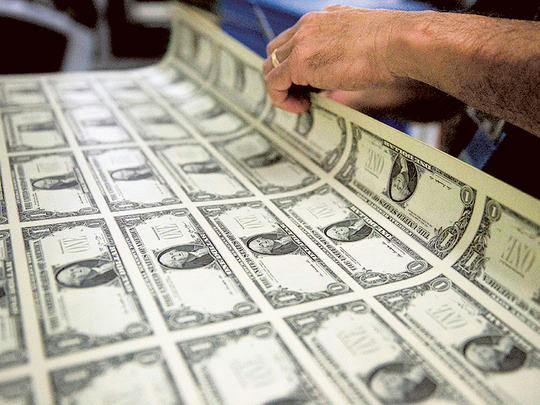
Washington: The world’s largest currency trader says forget about the Federal Reserve driving the dollar higher, even if the central bank does raise interest rates later this year.
The greenback, which strengthened for a third week for the first time since May, is more likely to trade on evidence of US economic growth than on what the central bank does, according to Steven Englander, global head of Group-of-10 currency strategy at Citigroup Inc., the top foreign-exchange trader according to Euromoney magazine. While not ruling out a hike this year, he’s telling clients don’t depend on it since Fed policymakers may be hesitant to act during the campaign leading up to the Nov. 8 presidential election.
“We see moderate dollar strength, but no spike in coming months,” Englander wrote in a note to clients. “Money markets are reluctant to price in a pre-election hike and December is far away.”
The dollar’s recent rally has pared its 2016 loss as Citigroup ‘s US. Economic Surprise Index, which measures whether data exceed or trail forecasts, rose to the highest since December 2014 following reports showing stronger payrolls and manufacturing. Futures prices show a potential Fed rate increase this year is back on the table, a possibility that seemed unlikely in the wake of early-year economic underperformance and the aftermath of the UK vote to leave the European Union.
The Bloomberg Dollar Spot Index, which tracks the currency against 10 major peers, rose 0.8 per cent this week. The greenback added 0.5 per cent to $1.0977 per euro and gained 1.2 per cent to 106.13 yen.
Hedge funds and other large speculators in the futures market increased net positions that profit from a stronger dollar versus eight major currencies to 111,931 contracts as of July 19, according to the Commodity Futures Trading Commission. This measure was net bearish as recently as May 17.
Currency markets may be underestimating the likelihood of a Fed move, said Mark McCormick, North American head of foreign-exchange strategy at Toronto-Dominion Bank.
“Our indicators of dollar market positioning show light dollar holdings relative to the past three years,” McCormick said. “This argues that markets are certainly not positioned for a rate hike this year.”
While only 10 per cent of traders expect the central banks to raise rates during their meeting next week, 45 per cent predict the Fed will raise rates by December, based on the assumption that the effective fed funds rate will trade at the middle of the new Federal Open Market Committee target range after the next increase. The Fed raised its target to a range of 0.25 per cent to 0.5 per cent in December, the first increase since 2006.
For more on the dollar’s role in the global economy, click here.
Citigroup’s Englander said that while conditions may be right for a rate increase, the timing would be the challenge. If the central banks fails to act in September, conditions that would justify a hike may change during the course of the following months, especially if the election result jolts markets.
“December sounds reasonable, but it’s certainly not in the bag,” he said.












